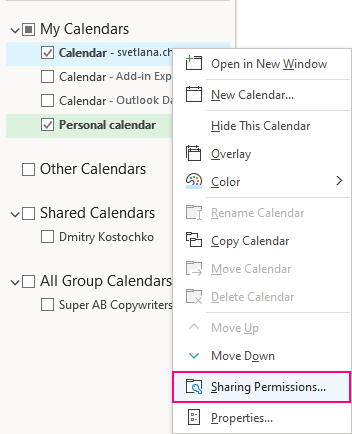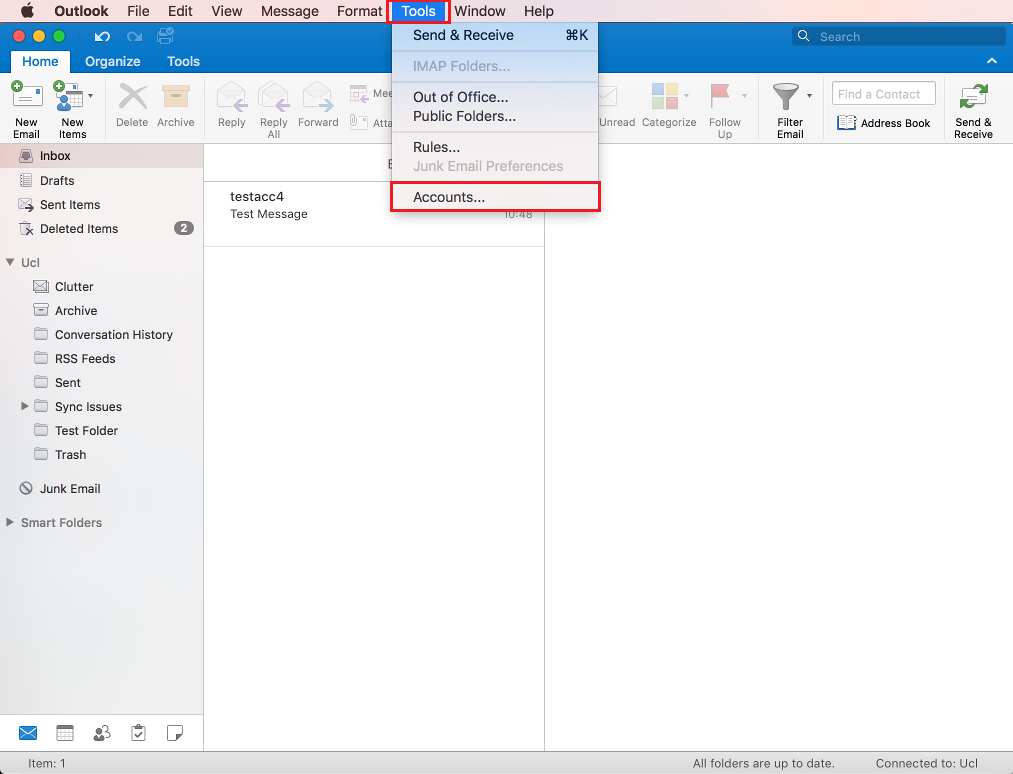

- #Outlook mac not opening shared calendar for mac
- #Outlook mac not opening shared calendar portable
- #Outlook mac not opening shared calendar pro
- #Outlook mac not opening shared calendar Offline
- #Outlook mac not opening shared calendar download
Secondly, setup the Calendar folder permission. Setup higher permission only when you need to grant more access rights (e.g. 
( Reviewer permission is a minimum requirement for accessing sub-folder like calendar.
In the Roles box, click the permissions you want. In the Name box, click the name of the person you just added. In the Type name or select from list box, type or select the name of the person you want to grant sharing permissions to. Right click the folder Mailbox - Your NAME, and then click Properties on the shortcut menu. Firstly, setup the Mailbox folder permission. If the Folder List is not visible, click the View menu, click Folder List. You need to setup the permissions for your Mailbox and Calendar folder. If you receive a mail message that says you have been given delegate access permission to share a Calendar, you can send and accept meeting requests for your colleague or manager in addition to the activities listed above. You can also schedule appointments and meetings for your colleague or manager. For more, see Plan and configure Cached Exchange Mode in Outlook 2016 for Windows.If a colleague or manager lets you know that they have given you access to share their Calendar, you can open the shared Calendar and read their schedule. #Outlook mac not opening shared calendar pro
If you're an IT Pro planning a deployment of Office, you can also configure Outlook's Exchange connection mode options by using the Office Customization Tool (OCT) or Group Policy.
Click Done, and then close the "Account Settings" window.įor more details, see Turn on Cached Exchange Mode. #Outlook mac not opening shared calendar download
Check the Use Cached Exchange Mode to download email to an Outlook data file box, position the slider for email to download as desired (slide it all the way to the right to download all email), and then click Next. Select your account, and then click Change. In Outlook, go to File, then Account Settings, and then Account Settings. To turn on Cached Exchange Mode in Office 365 or Office 2019: To disable Cached Exchange Mode and switch to Online Mode, the user can choose to uncheck Use Cached Exchange Mode during account setup or by changing the Exchange account settings later within Outlook's Account Settings window. For large mailboxes, performance can become an issue in Cached Exchange Mode.īy default, Cached Exchange Mode will be selected when a user adds an Exchange account in Outlook. Large mailboxes on computers that don't have sufficient hard disk space for a local copy of the mailbox. Kiosk scenarios, where a particular computer has many users who access different Outlook accounts, and the delay to download email messages to a local cache is unacceptable. When to use Online ModeĪt IU, Online Mode is recommended for the following scenarios: You can enable Online Mode by disabling Cached Exchange Mode. Mailbox data is only cached in memory and never written to disk. Online Mode works by using information directly from the server as the name implies, it requires a connection. The second type of Exchange connection mode is Online Mode. While Cached Exchange Mode is the default and recommended mode, there are some known issues with this mode, including synchronization delays with shared items and address book updates see Known issues with Cached Exchange Mode. Users who have high-latency connections (greater than 500 ms) to the Exchange servers. #Outlook mac not opening shared calendar Offline
Users who frequently work offline or without connectivity. #Outlook mac not opening shared calendar portable
Portable computer users who frequently move in and out of connectivity. When the user is online, the cached mailbox and OAB are periodically updated from the Exchange Server in the background.Ĭached Exchange Mode is especially valuable for: Any email messages the user drafted while offline are automatically sent when that user is back online. If a user is offline and using Outlook, the program works from this local copy and with the Offline Address Book (OAB). After messages have been pulled over the network one time, subsequent access to those messages does not cause additional network traffic. It's also designed to help insulate users from network latency and connectivity issues while they are using Outlook.īy caching users' mailboxes to their computers, Outlook no longer depends on continuous network connectivity for access to user information. ost file) on the user's computer, together with an Offline Address Book (OAB).Ĭached Exchange Mode's purpose is to provide a seamless online and offline Outlook experience. When an Exchange account in Outlook is configured to use Cached Exchange Mode, Outlook works from a local copy of the user's Exchange mailbox that is stored in an offline data file (. #Outlook mac not opening shared calendar for mac
Outlook for Mac desktop versions (including 2016) support only Cached Exchange Mode.Ĭached Exchange Mode is the default and recommended configuration for most scenarios except those mentioned under When to use Online Mode. See Configure Exchange Online with Outlook or Windows Mail.






 0 kommentar(er)
0 kommentar(er)
